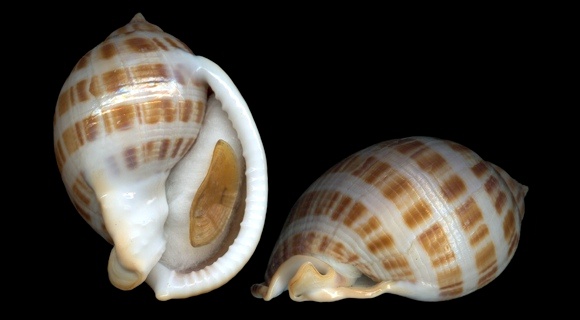
200m deep, Málaga, Andalucia, S. Spain. 58mm.
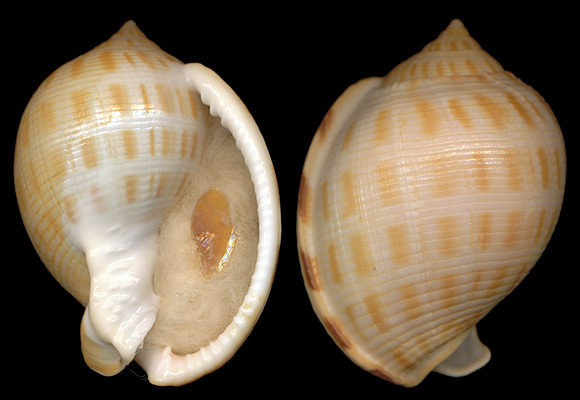
Synonyms: adansoni, globosa, laevigatus, myolaevigata, nucleus, platystomus, saburoni… In the north, the range extends up to Germany: Phalium miolaevigatum (Sacco 1890) was registered from Morsum-Kliff, on Sylt island, Nordfriesland [via gbif.org – Senckenberg Naturmuseum, Frankfurt]. In the south, some specimens have been collected off Pointe Noire area, Republic of Congo [via gbif.org – Academy of Natural Sciences, Philadelphia, Pennsylvania, USA].
A specimen from the Banc d’Arguin, Dakhlet Nouadhibou, N. Mauritania.46,7mm.
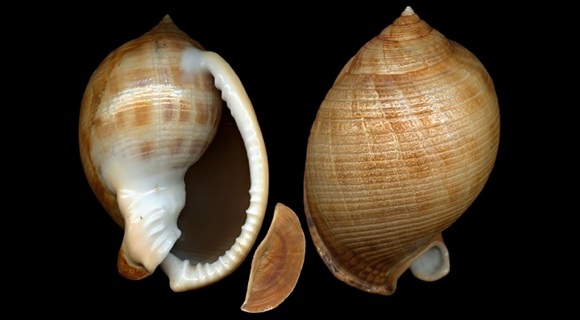
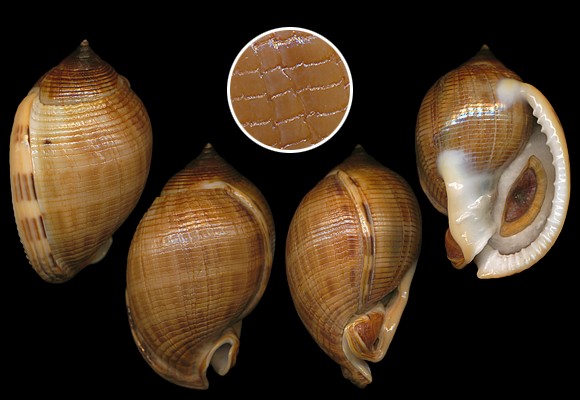
150m deep, Almería, Andalucia. 56mm.
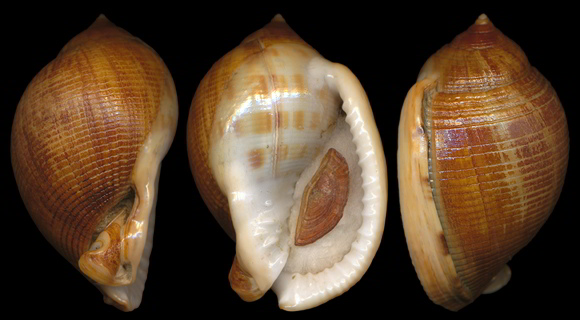
The shell « is composed of seven whorls, rather bulbous and rounded but poorly distinguishable from one another. The exterior surface of these whorls is adorned with a large quantity of small corrugations, closely spaced, which turn with them. They are thirty-five in number on the first whorl, twelve on the second one, eight on the third, and much less on the others. In addition, the first whorl shows on its left side a rather elevated bead, which extends therethrough from top to bottom. […] The labial bead is flattened outside, rounded on the internal side, which is rippled by twenty-five to thirty little costae, rather short and irregular. » – M. Adanson: Histoire naturelle du Sénégal, Paris 1757, p.113.
No varix (bead) on this specimen, collected at 300m deep, on mud, off Málaga. 61,5mm.
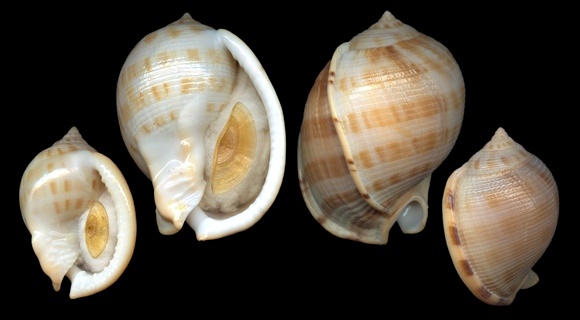
Adanson: « This shell is rather beautiful and glossy. Five rows of tawny squared blotches run on the first whorl, whose background is agate or flesh-coloured. The area where these blotches encounter the two beads is of a very dark brown. The other whorls have only one row of such blotches. The edge of the aperture is milky-white, and its inside appears tawny, because of the transparence that reveals the outside blotches. » – 200m deep, Málaga. 40-66mm.
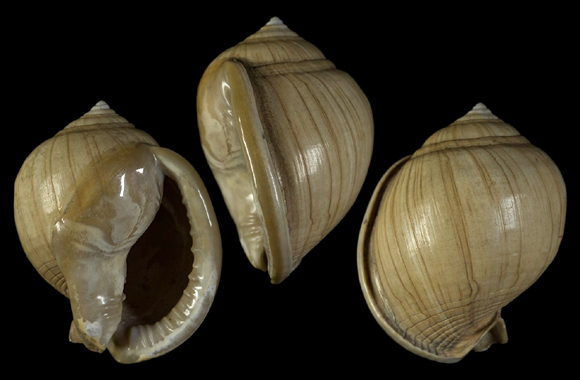
Very globose Miocene specimen in the Cossmann collection 1991-14 at the MNHN Paris. Langhian strata (15,97 to 13,82 Ma) of Saubrigues, Landes, SW. France. 76mm. Original pictures provided by P. Massicard for the MNHN – (CC BY).